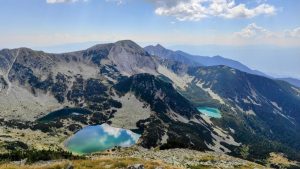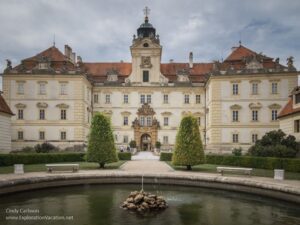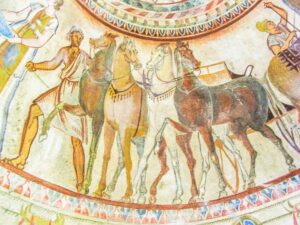Škocjan Caves
A massive and scientifically important underground cave system known for its beauty.

A massive and scientifically important underground cave system known for its beauty.

An unusual 18th-century church that combines Baroque and Gothic styles with symbolism around the number 5.

An intact fortified medieval town built by Transylvanian Saxons.

An ancient city on a peninsula containing architecture from many eras, including unique Bulgarian Renaissance elements.

Primeval forests of European beech trees that survived the last Ice Age and then spread across Europe, now protected in 93 locations across 18 countries.

A hilly region with 16 villages and what remains of a huge Roman-era gold mining operation.

A chain of survey points from Norway to Ukraine set up in the 19th century to study the curvature of the Earth.

A mountainous reserve known for the beauty of its landscapes and rich biodiversity.

A Nazi extermination camp, now a place of remembrance of the atrocities committed by the Nazis in carrying out their so-called “Final Solution.”

A monastery complex from the Bulgarian Renaissance, important to the spiritual and social life of Bulgaria.

Peter the Great’s planned city of stunning Baroque architecture.

An area of dramatic mountainous scenery, dense forests, glacial lakes and deep canyons.

A beautiful area around the Bay of Kotor with authentic, well-preserved architecture.

An outstanding example of Modern architecture of the 1920s, designed by Mies van der Rohe.

Towns in seven countries where an early tourism industry thrived around natural hot springs.

Stunning waterfalls and lakes formed by natural tufa barriers.

An Orthodox Christian cathedral and monastery dating back to the 11th century.

An intact 13th-century Old Town and New Town – the former was a trading hub, the latter a craft center – plus a Teutonic castle ruin.

A small city on an island showing influences from a succession of ruling powers.

A massive brick castle from an era of forced conversion to Christianity in eastern Europe.

Significant not for its history, but for the symbolism of its restoration.

A complete architectural ensemble built around the well-preserved ruins of a large palace complex.

An outstanding near-total reconstruction of a centuries-old historic city center.

Significant because of its urban landscape and influence on European architecture.

An intact and very charming medieval city surrounding a large 13th-century castle with Gothic, Renaissance and Baroque elements.

Two castles and the extensive grounds, gardens and outbuildings around them form a harmonious man-made cultural landscape.

A well-preserved rural mountain village with traditional wooden architecture.

An Eastern European city center with its original medieval street layout and architectural forms spanning centuries.

An important market town for hundreds of years and an outstanding example of urban planning, with a range of historical architectural styles.

A well-preserved medieval, Renaissance and Baroque city inside extensive intact fortifications.

A palace and three gardens, one of which represents the epitome of Baroque garden design.

A 4th-century tomb containing frescoes that are masterpieces of Hellenistic Thracia.

A historical Jewish neighborhood and a Catholic Basilica illustrate how Jews and Christians co-existed peacefully.

Elegant timber-built church architecture, filled with bright vernacular religious imagery.

An intact medieval fortified city.

The tallest memorial column in Czechia, a masterpiece of Moravian Baroque.